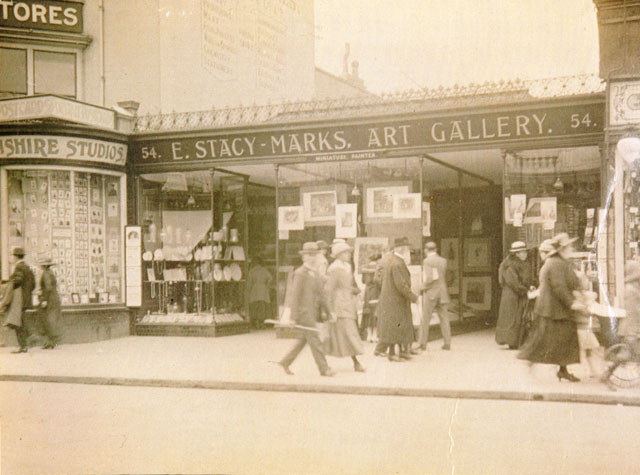

1889-
Joseph Thors (circa 1843-1898)
Joseph Thors lived and worked in London during the middle part of the 19th Century.
Thors was a prolific painter of English landscape subjects and he is one of those artists of which there is very little biographical detail of note about him and very little known about his life.
It is known however, that he exhibited in London, with six works in the Royal Academy between 1863 and 1884, two in the British Institution and fifteen paintings in Suffolk Street.
From the content of his subjects though, it can be gleaned that he travelled fairly incessantly throughout his life. A lot of his subjects are painted in the Midlands, and also the Home Counties but he has often been regarded in the past as a member of the Birmingham school. However, his style is very reminiscent of a number of the Norwich school of painters of the same period, and it is quite possible, if not probable, that a number of his subjects were also painted in East Anglia. He is certainly known to have exhibited in Birmingham between and 1869 and 1900.
Whatever the lack of knowledge of this artist however, it is more than compensated by the quality and breadth of Thors as an artist. A number of his best paintings remain today as of the highest standard of his period. He is well known for his landscapes which are usually of charming rustic scenes with cottages, figures and animals, keenly observed and often characterising 19th Century Britain, with rustic people going about their every-day life. His figures are often simple and basic and almost cartoon-like but they are carefully composed within his subjects with a quality and beauty which romanticises his period. His work is often characterised by soft, mellow greens and browns interrelated with clever contrasts of light and shade depicting the various times of year and weather.
His works are also known to have been engraved during his lifetime and have obviously sold quite successfully because many of these have remained in good condition to the present day and were very popular during his lifetime. He painted large exhibition canvases but possibly his most charming work is often his little pairs and sets of fours.